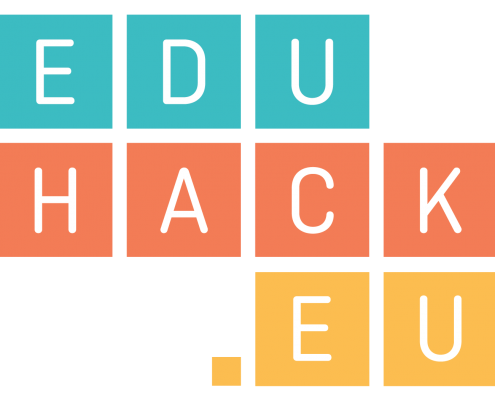Design your own eLearning intervention
Read
 Effective eLearning begins with a very clear idea of its purpose – without having a clear idea of what you want to achieve it is very difficult to come up with a good design and plan. You also need to take into account what it means to adopt eLearning into your course offer and the impact this will have in many practical ways. How will you adapt your course content? What about interaction between you and your students and amongst students themselves? There are also questions to be answered in terms of assessment, quality control, collaboration, etc. Getting it right starts with good design and a sound overall approach: eLearning has come a long way in recent years, there are a lot of resources available to help you designing your eLearning strategy.
Effective eLearning begins with a very clear idea of its purpose – without having a clear idea of what you want to achieve it is very difficult to come up with a good design and plan. You also need to take into account what it means to adopt eLearning into your course offer and the impact this will have in many practical ways. How will you adapt your course content? What about interaction between you and your students and amongst students themselves? There are also questions to be answered in terms of assessment, quality control, collaboration, etc. Getting it right starts with good design and a sound overall approach: eLearning has come a long way in recent years, there are a lot of resources available to help you designing your eLearning strategy.
While all of the sound pedagogical strategies that you have utilised in your face-to-face teaching still apply when moving online, eLearning brings its own considerations that you will need to take into account. The Digital Education team at the University of Edinburgh in the UK published an eLearning Manifesto in 2011 that was revised in 2016. In this document they address some of the unique features of teaching online. Amongst the many convincing statements contained in this manifesto, several are worth highlighting here. First of all ‘There are many ways to get it right online. ‘Best Practice’ neglects context.‘ Indeed, while there are several common considerations when designing your own eLearning intervention, ‘no one size fits all’. Just because a design or approach works for one set of learning activities, there is no guarantee it will work in another context, it is always best to start anew when designing eLearning. Secondly, ‘text has been troubled; many modes matter in representing academic knowledge‘. Take a long hard look at the resources you want to adapt for online teaching to help you share the underlying knowledge that is at the heart of your course and consider how it can be represented in modes other than text. And finally, ‘Aesthetics matter; interface design shapes learning‘. Don’t underestimate the look, feel and functionality of every online artefact, tool, resource or service – it can make the difference to the overall success of your work.
Watch
In the video “The Future of Learning Environments” Educause describes the impact of technology on the way Higher Education changes and how innovation impacts learning and teaching. (duration 8:25)
Take a look at this video interview with Richard Culatta in which he argues for the development of interactive online learning. (duration: 4:01)
Do
(estimated time to complete the task: 1 hour)
Your task now is to take one lesson or module of a course you are giving or plan to give and re-design it so it can be delivered online. We have created a list of questions to help you draft a winning eLearning strategy (adapting them from this blog post from Shift eLearning) in order to help you with the design of this module or course.
Consider the set of questions below and provide answers through a blog post on your own blog or the EduHack Wall related to the specific module or course you would like to deliver.
Define the purpose, scope, and goals of your eLearning intervention
- What do you want to achieve with this eLearning intervention, including the relevant learning goals broken down into manageable elements?
- What are your measurable objectives linked to these goals?
Understand your students and their readiness to take part in your eLearning intervention
- Who are your students and what is their experience with eLearning?
- What are they expecting from this module?
- What technical resources do they have available?
- What technical support is available to your students?
Review and adapt the content of your course
- What are the building blocks of the course in terms of materials, resources and activities?
- How can these building blocks be adapted for online delivery?
- Who will be responsible for this adaptation? Do you have the resources to implement it?
- Who else will be involved in this process?
- How will you facilitate teacher/student and student/student interaction?
Plan access and assessment
- How will students access the course building blocks?
- Are you planning to track student activities online and if yes, then how?
- How will you facilitate assessment of this module?
Additional Resources
- Take a look at this PINTEREST page which provides a broad selection of infographics on the topic of eLearning design. Most come from commercial eLearning providers but many of the principles can be applied to online learning design of courses in higher education.
- The MOOC called “The Online Educator: People and Pedagogy”, focuses on eLearning courses design.
- The MOOC “Engaging Students in Active Learning” looks at the reality of the relationship between teacher and learner from different perspectives, where they fit learning objectives into each scenario to create an engaging and driven learning experience. These are the basis of active learning.
- This JISC Guide provides interesting advice to newcomers interested in designing eLearning, as well as information on what works and what doesn’t in online learning.
- Online learning guru Tony Bates has a wealth of resources published online related to the design of eLearning. In his series of 9 steps blogposts you can find an in-depth elaboration of how to set about designing effective eLearning modules and courses.
- The course “To Flip Or Not To Flip – Discover the flipped classroom methodology” explores the Flipped Classroom approach for teaching and learning.

